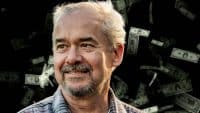
“The 4% Drawdown Rule” for retirees has become a reference rule of thumb since it was coined by financial advisor William Bengen in 1994. Predicated on various retirement portfolios, Bengen calculated that an approximately 4.0%-4.2% annual drawdown on a retirement account starting at age 65 stood a 90% chance of the portfolio lasting for 30 years. The 4% Rule has become an even more often cited reference of late by F.I.R.E. (Financial Independence Retire Early) fans. F.I.R.E. adherents have been aggressively growing their retirement accounts in order to maintain a 4% withdrawal rate starting as early as in their 40’s, if mathematically feasible.
However, 4% is a figure that can apply to a number of other topics in the financial wheelhouse of investors and prospective retirees. 4% could refer to a reduced interest rate target on a credit card previously charging in double digits. 4% is the inflation rate that a number of economists are projecting could be the top range for 2025, as it rose to over 3% in January due in no small part to last minute Biden administration spending initiatives.
Conversely, 4% is an APY that an investor could be earning in a very liquid, passive, and convenient way.
24/7 Wall St. Key Points:
-
The 4% Rule was created by financial advisor William Bengen in 1994. It is also known as the Bengen Rule.
-
The 4% Rule (actually 4.2%) was based on various 30-year period portfolio studies, finding that mixed portfolios of stocks and bonds with 4.2% of withdrawals per year had a 90% chance of the portfolios lasting for 30 years.
-
4% is also the amount of APY available from many High Yield Savings accounts, based at the time of this writing.
-
Earn up to 3.8% on your money today (and get a cash bonus); click here to see how. (Sponsored)
The Origin of the Bengen 4% Drawdown Rule
Originally an MIT graduate with degrees in aeronautics and astronautics, William Bengen published a book for MIT press, Topics in Advanced Model Rocketry (1973), before serving as COO of a bottling firm for 17 years. He then relocated to California, and started a solo practice as a Certified Financial Planner for the next 20 years.
In the course of Bengen’s CFP career, he did an exhaustive research study on various retirement portfolios going out for 30 years, publishing his results in The Journal of Financial Planning (October, 1994). He found that a 4% – 4.2% annual withdrawal rate with adjustments for inflation on a mixed retirement portfolio of stock and bonds could ostensibly last for 30 years with a 90% probability rate.
The 4% rule, also becoming interchangeably known as “The Bengen Rule” and “The Rule of 300”, would become very popular with retirement planners for their projected average growth and income requirements for millions of clients. The cookie cutter approach, while clearly a gross generalization requiring customization on a per person basis, was nevertheless an easier marketing angle for money managers and brokers, and soon became a part of conventional wisdom in the financial world. The 4% Rule would suffer criticism from other financial analysts, economists, and other financial professionals over the next 30 years.
Bengen would later clarify some updated points about The 4% Rule in 2012, both to acknowledge the criticisms and to put stronger context to his research, citing the following:
- “The 4% Rule” was based on a worst-case scenario for those retiring in 1968. This was before the Bear Market and double-digit interest rates and inflation of the 1970s and the Carter Administration.
- The 4% Rule was Bengen’s calculated SAFEMAX rate, i.e., the maximum safe rate of withdrawal based on economic conditions at that time (1968). The SAFEMAX rate would later be revised to 4.5% if tax-free and 4.1% for taxable.
- Over a longer period, Bengen stated that history leaned closer to a 7% average SAFEMAX rate, again factoring inflation and prevailing interest rates into the equation.
The High Yield Savings Account 4% Alternative

Retirees who are shifting funds from their growth vehicles into liquid cash and income-generating assets have a number of concerns, such as:
- How to handle funds from maturing bonds to keep them liquid but still earn a meaningful interest rate?
- What is the best vehicle that can serve as a fund repository for emergency funds in case of a medical or other unexpected costly event?
- If a portion of a retirement portfolio’s growth-oriented stocks, mutual funds or ETFs need to be sold, can the idle portion not used for immediate expenses generate income while liquid to offset capital gains taxes?
- In the case of RMD, the entire distribution may be a forced liquidation. Can that cash generate income to help offset income tax?
As a result of the current economic environment, High Yield Savings Accounts (HYSA) have emerged as a viable safe asset class for interest generation with immediate liquidity. Many HYSA possesses these qualities:
- Identical debit card, notification alerts, and checking privileges as standard savings accounts.
- APY of as high as 4.0% or more.
- Although many HYSAs are offered from online financial firms, Capital One, JP Morgan Chase, and other brick and mortar banks also offer their own HYSA versions.
- ATM card liquidity without a withdrawal penalty, unlike with Certificates of Deposit.
- FDIC insurance of up to $250,000 per account.
- No account fees.
- Some HYSAs don’t even have a minimum balance requirement.
How The High Yield Savings Account Can Become The New 4% Rule Paradigm

The flexibility of applications for the HYSA can make it an invaluable tool for retirees. Morningstar’s researchers actually calculated its 2024 recommendation for retiree withdrawals at 3.7%. Obviously, each account needs to be strategized on a case by case basis, with lifestyle, spending rates, RMD ages, current portfolio holdings, and other factors all part of the checklist. That said, some of the ways the HYSA can be a great benefit for retirees can include:
- Funds from matured bonds usually need to remain liquid as retiree income. However, since the amounts can range in ten to hundreds of thousands, an HYSA (or more, if the total amount exceeds the $250,000 FDIC insurance cap) can continue to generate bond-like 4% income but with the added instant liquidity convenience.
- Emergency Funds that may have been building up at a meager 1% or possibly in a 3% Certificate of Deposit that would charge a penalty if needed to be redeemed early, could easily be swapped into a High Yield Savings Account for greater interest generation and full, 24/7 penalty-free liquidity.
- Depending upon the retiree’s spending habits, a $40,000 annual income could all be derived from a $1 million nest egg divided into (4) separate HYSA that each have a 4% APY. Each account would have 100% FDIC insurance protection.
- Any forced or voluntary liquidation of growth assets due to RMD or needed income could sit in the High Yield Savings Account and earn 4% to offset corresponding capital gains or income tax that would need to be filed by April 15th with the IRS while being drawn down for expenses.
- As retirees get older and long-term healthcare bills increase in frequency, Health Savings Account (HSA) funds might be better deployed in a HYSA with autopay on certain recurring expenses, such as prescriptions, in order to avoid a potentially dangerous interruption of service and delivery due to inadvertent non-payment.
- The HYSA is an excellent vehicle for a retiree to help avoid the gift tax while granting access to money that a child or grandchild might need. A Joint With Rights of Survivorship HighYield Savings Account can be opened in both the retiree and child’s name that would allow the child to spend the funds as needed.
With their wide variety of uses, the High Yield Savings Account can be compared to a financial Swiss Army Knife in the way it combines instant liquidity, insured principal security, attractive interest, and convenience in a single package. “The 4% Rule” may soon take on new financial industry parlance definition if the current HYSA trend continues.
The Average American Has No Idea How Much Money You Can Make Today (Sponsor)
The last few years made people forget how much banks and CD’s can pay. Meanwhile, interest rates have spiked and many can afford to pay you much more, but most are keeping yields low and hoping you won’t notice.
But there is good news. To win qualified customers, some accounts are paying almost 10x the national average! That’s an incredible way to keep your money safe and earn more at the same time. Our top pick for high yield savings accounts includes other benefits as well. You can earn up to 3.80% with a Checking & Savings Account today Sign up and get up to $300 with direct deposit. No account fees. FDIC Insured.
Click here to see how much more you could be earning on your savings today. It takes just a few minutes to open an account to make your money work for you.
Our top pick for high yield savings accounts includes other benefits as well. You can earn up to 4.00% with a Checking & Savings Account from Sofi. Sign up and get up to $300 with direct deposit. No account fees. FDIC Insured.
Thank you for reading! Have some feedback for us?
Contact the 24/7 Wall St. editorial team.




